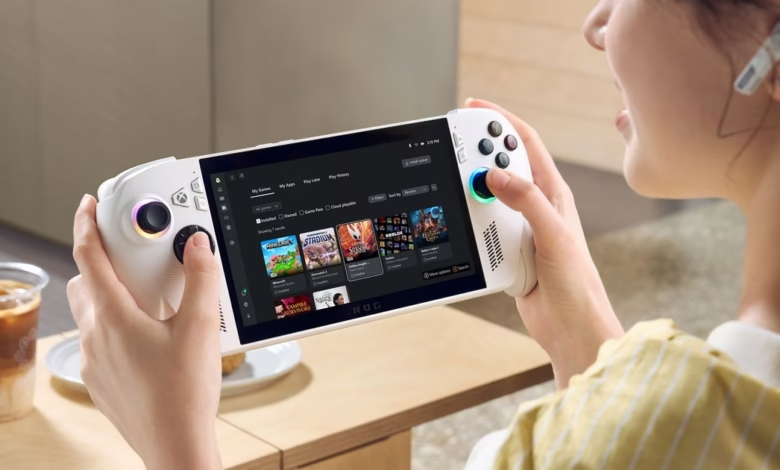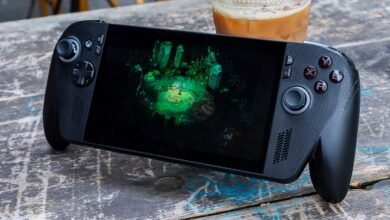Xbox Targets Valve, Not Nintendo, in Handheld Gaming Race

▼ Summary
– Microsoft and Asus have partnered to launch two Xbox-branded handhelds, the ROG Xbox Ally and Ally X, set for release in the 2025 holiday season.
– The Xbox Ally is positioned as a budget-friendly option, while the Ally X targets high-performance gaming, both featuring AMD processors and Windows 11.
– These handhelds integrate Xbox features like branded buttons, Game Pass, and cross-platform play, while also supporting PC game streaming via Xbox Cloud Gaming.
– Microsoft aims to bridge the gap between PC and console gaming by leveraging Windows 11 for broader game compatibility, directly competing with Valve’s Steam Deck.
– Analysts suggest this move reflects Microsoft’s strategy to expand its PC gaming presence and counter Valve’s influence, though pricing remains a critical unknown factor.
Microsoft is making bold moves in the handheld gaming space with its newly announced Xbox-branded devices, the ROG Xbox Ally and Ally X, developed in partnership with Asus. Set to launch during the 2025 holiday season, these Windows 11-powered handhelds aim to blend PC versatility with Xbox’s ecosystem, offering a unique proposition for gamers. While pricing remains undisclosed, the strategy behind these devices reveals Microsoft’s focus on competing with Valve rather than Nintendo in this growing market.
The Xbox Ally is positioned as an accessible entry point, while the Ally X caters to performance-hungry players. Both models feature AMD processors and Xbox-branded controls, along with a streamlined interface designed to prioritize gaming. What sets them apart is their ability to aggregate games from multiple PC storefronts while integrating Xbox Game Pass and cloud streaming. This approach creates a unified library that travels with players across devices—a clear advantage for those invested in Microsoft’s ecosystem.
One of the standout features is the Xbox full-screen experience, which optimizes system resources for gameplay while minimizing background tasks. The design borrows from Xbox’s controller ergonomics, ensuring comfort during extended play sessions. Accessibility features from both Xbox and Windows carry over, and support for Xbox Play Anywhere means purchased games work seamlessly across PC, console, and cloud.
Initial availability spans major markets including the US, UK, Japan, and several European countries, with expansions planned for regions where Asus’s ROG Ally is already sold. This rollout suggests Microsoft is targeting established gaming hubs rather than chasing Nintendo’s global mass appeal.
The inclusion of Windows 11 is pivotal. Microsoft emphasizes the platform’s flexibility, explicitly highlighting access to games unavailable on competing devices—a thinly veiled jab at Valve’s Linux-based Steam Deck. While the Steam Deck excels within its ecosystem, its limitations with third-party storefronts create an opening for Microsoft to offer a more open alternative. By combining PC gaming’s breadth with Xbox’s services, these handhelds could attract both console loyalists and PC enthusiasts.
Analysts note that Microsoft’s strategy mirrors its dual-console approach with the Xbox Series S and X, offering tiered options to different audiences. Piers Harding-Rolls of Ampere Analysis points out that this partnership underscores Microsoft’s commitment to expanding Windows’ dominance in gaming, particularly as PC Game Pass gains traction. With Valve’s Steam Deck selling approximately 4 million units and the Switch surpassing 150 million, Microsoft sees room to carve out a niche between these extremes.
Price remains the wildcard. The Steam Deck starts at $399, while Asus’s existing ROG Ally launched at $600. If Microsoft can strike a balance between affordability and performance, it could appeal to a broad spectrum of gamers. However, given the Ally X’s premium specs, a budget-friendly tag seems unlikely.
As the gaming handheld market heats up with Nintendo’s Switch 2 now in play, Microsoft’s entry adds fresh competition. Rather than battling Sony or Nintendo directly, Xbox is leveraging its strengths in cross-platform integration and Windows compatibility. Whether this gamble pays off depends on execution, but for now, it’s clear Microsoft is playing a different game altogether.
(Source: Games Industry)





